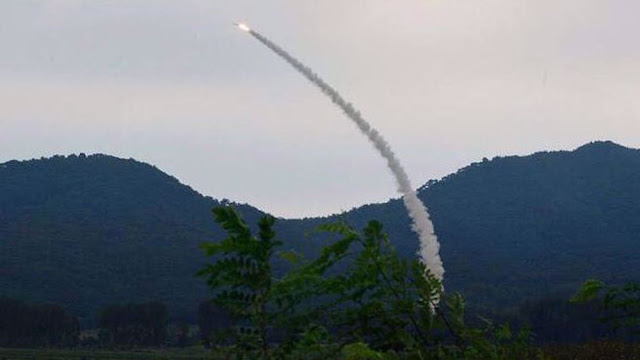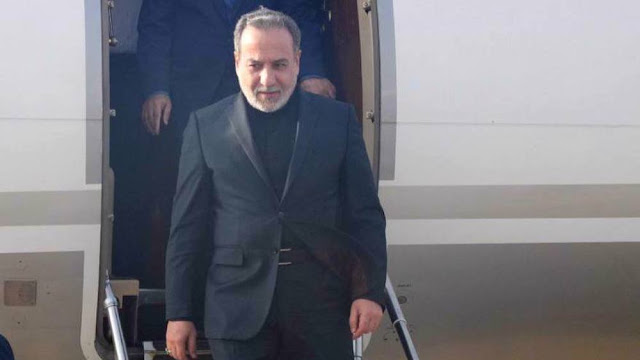On Sunday, August 24, 2025, Major General Amir Hatami, the Commander-in-Chief of Iran’s Armed Forces, delivered a powerful address at a ceremony held at Imam Khomeini Naval University in Noshahr, emphasizing Iran’s military preparedness and resolute stance against external threats. His remarks, made in the context of recent regional tensions and a transformative 12-day war with Israel and the United States in June 2025, underscored Iran’s strategic position in the region, its commitment to safeguarding national sovereignty, and the rapid advancements in its military capabilities. Hatami’s speech, coupled with the Iranian Navy’s recent missile exercise, codenamed Sustainable Power 1404, highlights Iran’s determination to maintain a robust defense posture in an increasingly volatile geopolitical landscape.
Iran’s Army Chief Major General Amir Hatami (L) speaks at Imam Khomeini Naval University of Noshahrin on August 24, 2025.
This article provides an in-depth exploration of Hatami’s statements, the context of Iran’s military strategy, the recent conflict, and the broader implications for regional and global security.
Context of Hatami’s Address
Major General Amir Hatami’s address at the Imam Khomeini Naval University came at a pivotal moment for Iran, as the nation navigates a complex web of regional rivalries, external aggressions, and internal imperatives to strengthen its defense capabilities. The ceremony, held in the coastal city of Noshahr, was attended by military personnel, government officials, and naval cadets, symbolizing the importance of Iran’s maritime forces in safeguarding its territorial waters and projecting power in the region. Hatami’s remarks were not only a message to Iran’s adversaries but also a rallying call to its armed forces to remain vigilant and adaptive in the face of evolving threats.
Iran’s strategic position in the Middle East has long been defined by its resistance to foreign influence, particularly from the United States and Israel, which it views as primary adversaries. The country’s geographic location, straddling the Persian Gulf and the Sea of Oman, makes it a critical player in regional security dynamics, particularly in maritime domains. Hatami’s emphasis on Iran’s “special” position among regional countries reflects its ambition to assert leadership while maintaining its independence and territorial integrity.
The backdrop to Hatami’s speech was the 12-day war in June 2025, a conflict that marked a significant escalation in tensions between Iran, Israel, and the United States. On June 13, 2025, Israel launched what Iran describes as a “blatant and unprovoked” attack, triggering a war that resulted in the deaths of at least 1,064 Iranians, including military commanders, nuclear scientists, and civilians. The United States’ involvement, particularly its bombing of three Iranian nuclear sites, further intensified the conflict, drawing condemnation from Iran and its allies as a violation of international law. Iran’s retaliatory strikes on strategic targets in Israel and the U.S.’s al-Udeid air base in Qatar demonstrated its military resolve and capability, ultimately forcing a halt to the aggression on June 24, 2025.
Key Themes of Hatami’s Speech
Major General Hatami’s address was multifaceted, addressing Iran’s military preparedness, the need for technological advancement, and the lessons learned from recent conflicts. Below are the key themes he emphasized:
Military Preparedness and Deterrence: Hatami issued a stern warning to Iran’s enemies, asserting that the Iranian Armed Forces are “prepared, as in the past, to give a more crushing response with greater strength and resoluteness to punish any malicious aggressor.” This statement reflects Iran’s doctrine of deterrence, which seeks to dissuade potential adversaries through a demonstration of military strength and readiness. The reference to past successes, particularly the June 2025 retaliatory operations, underscores Iran’s confidence in its ability to counter threats effectively.
Scientific and Technological Advancements: The Army chief highlighted the rapid pace of scientific developments within Iran’s Armed Forces, noting that these advancements are essential to keeping pace with the evolving nature of threats. In an era of modern warfare, characterized by cyber threats, drones, and precision-guided munitions, Iran has invested heavily in indigenous defense technologies. Hatami’s remarks suggest that the military is prioritizing innovation to enhance its capabilities, particularly in response to sophisticated adversaries like Israel and the United States.
Lessons from Past Conflicts: Hatami stressed the importance of drawing on experiences from past wars, particularly the 12-day conflict in June 2025. The war provided valuable insights into the strategies and tactics of Iran’s adversaries, as well as the effectiveness of its own military responses. By analyzing these experiences, the Iranian Armed Forces aim to refine their strategies and bolster their readiness for future challenges.
Maritime Security: Given the setting of the address at a naval university, Hatami placed particular emphasis on the importance of maintaining readiness against maritime threats. Iran’s strategic location along the Persian Gulf and the Sea of Oman makes its navy a critical component of its defense architecture. The recent naval missile exercise, Sustainable Power 1404, demonstrated the Iranian Navy’s ability to project power and protect national interests in these vital waterways.
Focus on Modern Warfare: Hatami underscored the need for the Iranian Army to prepare for modern warfare, which includes not only conventional military operations but also asymmetric tactics, cyber warfare, and hybrid threats. Strengthening defensive capabilities in these domains is a critical responsibility, as Iran faces a range of challenges from state and non-state actors.
The 12-Day War: A Turning Point
The 12-day war in June 2025 was a defining moment in Iran’s recent history, shaping its military and diplomatic strategies. The conflict began on June 13, when Israel launched a series of airstrikes targeting Iranian military and nuclear facilities. Iran described the attack as “unprovoked,” arguing that it was part of a broader Israeli strategy to undermine its sovereignty and nuclear program. The United States’ subsequent bombing of three Iranian nuclear sites escalated the conflict, drawing Iran into a direct confrontation with two of its most formidable adversaries.
The war resulted in significant loss of life, with at least 1,064 Iranians killed, including high-ranking military commanders and nuclear scientists. The targeting of scientists was particularly contentious, as it raised concerns about Israel’s intent to cripple Iran’s nuclear research capabilities. The civilian toll further fueled outrage in Iran, with the government framing the attacks as acts of terrorism and genocide.
Iran’s response was swift and decisive. The Iranian Armed Forces launched retaliatory strikes on strategic targets in Israel, including military installations in the occupied territories. Additionally, Iran targeted the al-Udeid air base in Qatar, the largest U.S. military base in West Asia, signaling its willingness to confront American forces directly. These operations, which concluded on June 24, 2025, were hailed by Iranian officials as a success, as they forced a halt to the aggression and demonstrated Iran’s military capabilities.
The war highlighted several key aspects of Iran’s defense strategy. First, it showcased the country’s ability to conduct precision strikes over long distances, a capability that has been a focus of its military modernization efforts. Second, it underscored Iran’s reliance on asymmetric warfare, leveraging its missile arsenal and regional alliances to counter the technological superiority of its adversaries. Finally, the conflict reinforced Iran’s narrative of resistance against foreign aggression, a theme that resonates deeply with its domestic audience and regional allies.
The Sustainable Power 1404 Naval Exercise
In a demonstration of its maritime prowess, the Iranian Navy conducted a major missile exercise, codenamed Sustainable Power 1404, on Thursday, August 21, 2025, across the northern Indian Ocean and the Sea of Oman. The exercise involved the use of various naval cruise missiles, including the Qadir, Nasir, and Qader medium-range anti-ship cruise missiles, which successfully hit their surface targets at sea. The operation showcased the Navy’s ability to engage targets with precision and underscored Iran’s focus on strengthening its maritime defenses.
The Sea of Oman and the northern Indian Ocean are strategically significant regions, serving as critical routes for global energy trade and maritime commerce. Iran’s naval presence in these waters is a key component of its strategy to secure its territorial waters, protect its economic interests, and deter potential aggressors. The success of the Sustainable Power 1404 exercise sends a clear message to regional and global powers about Iran’s readiness to defend its maritime boundaries.
The exercise also reflects Iran’s broader military modernization efforts. The Qadir, Nasir, and Qader missiles are part of Iran’s indigenous defense industry, which has prioritized the development of advanced weaponry to reduce reliance on foreign suppliers. By showcasing these capabilities, Iran is signaling its technological progress and its ability to project power beyond its borders.
Iran’s Strategic Position in the Region
Major General Hatami’s assertion that Iran holds a “special” position among regional countries is rooted in its unique geopolitical and ideological stance. As a major Shia power, Iran has positioned itself as a leader of the “Axis of Resistance,” a coalition of state and non-state actors that includes Syria, Hezbollah in Lebanon, and various militias in Iraq and Yemen. This network allows Iran to exert influence across the Middle East, countering the agendas of Israel, the United States, and their allies.
Iran’s strategic location, with access to the Persian Gulf, the Strait of Hormuz, and the Sea of Oman, enhances its importance in global energy markets. The Strait of Hormuz, through which a significant portion of the world’s oil passes, is a choke point that Iran has leveraged to assert its influence. The Iranian Navy’s role in securing these waters is critical, particularly in light of recurring tensions with the United States and its allies, who maintain a strong naval presence in the region.
Moreover, Iran’s nuclear program remains a central issue in its relations with the West and Israel. The bombing of three nuclear sites during the June 2025 war was a direct attack on Iran’s nuclear ambitions, which it claims are for peaceful purposes. The incident has likely accelerated Iran’s efforts to enhance its defense capabilities, including its missile program and cyber warfare units, to deter future attacks.
Geopolitical Implications
The developments outlined in Hatami’s speech and the recent naval exercise have significant implications for regional and global security. Below are some of the key implications:
Deterrence and Regional Power Dynamics: Iran’s emphasis on military preparedness and its successful retaliatory operations in June 2025 reinforce its position as a formidable regional power. By demonstrating its ability to strike strategic targets in Israel and the U.S., Iran is signaling that it will not tolerate aggression without consequences. This could alter the calculations of its adversaries, particularly Israel, which has relied on its military superiority to conduct operations against Iran and its allies.
U.S.-Iran Tensions: The U.S.’s involvement in the June 2025 war, particularly its bombing of Iranian nuclear sites, has further strained relations with Tehran. Iran’s retaliatory strike on the al-Udeid air base underscores its willingness to confront American forces directly, raising the risk of escalation in future conflicts. The Biden administration, or its successor, will need to navigate these tensions carefully, balancing support for Israel with the need to avoid a broader regional war.
Israel’s Strategic Challenges: Israel’s decision to launch the June 2025 war has backfired, as Iran’s retaliatory strikes demonstrated its ability to inflict significant damage. The conflict has likely strengthened Iran’s resolve to support resistance movements like Hamas and Hezbollah, which continue to challenge Israel’s security. Israel may now face increased pressure to reassess its approach to Iran, particularly in light of Iran’s growing missile capabilities.
Maritime Security in the Persian Gulf: The Sustainable Power 1404 exercise highlights the strategic importance of the Persian Gulf and the Sea of Oman. Any escalation in these waters could disrupt global energy supplies, given the region’s role in oil and gas trade. Iran’s naval capabilities, combined with its control over the Strait of Hormuz, give it significant leverage in this domain.
International Law and Accountability: Iran’s framing of the U.S. and Israeli actions as violations of international law reflects its intent to pursue legal and diplomatic avenues to hold its adversaries accountable. This could involve appeals to the United Nations, the International Criminal Court, or other international bodies, though such efforts are likely to face resistance from Western powers.
Challenges and Opportunities for Iran
Iran faces several challenges as it seeks to maintain its defense posture and regional influence. The economic impact of sanctions, coupled with the costs of the June 2025 war, places significant pressure on the government to balance military spending with domestic needs. Additionally, the loss of nuclear scientists and military commanders in the conflict may have set back Iran’s nuclear and defense programs, requiring time and resources to recover.
However, the crisis also presents opportunities. The successful retaliatory operations have bolstered Iran’s domestic legitimacy, reinforcing the narrative of resistance against foreign aggression. The naval exercise demonstrates Iran’s technological progress, which could attract interest from regional allies and non-aligned countries seeking to diversify their defense partnerships. Moreover, the conflict has strengthened Iran’s ties with its allies in the Axis of Resistance, creating opportunities for deeper cooperation.
Domestic and Regional Reactions
Domestically, Hatami’s speech and the naval exercise are likely to resonate with the Iranian public, which has long viewed the military as a bulwark against foreign interference. The government’s ability to halt the Israeli-U.S. aggression in June 2025 has been portrayed as a national victory, boosting morale and reinforcing support for the Islamic Republic’s leadership.
Regionally, Iran’s actions have elicited mixed reactions. Allies like Syria, Hezbollah, and Yemen’s Houthis have praised Iran’s resolve, viewing it as a model for resisting Western and Israeli influence. However, adversaries like Saudi Arabia and the United Arab Emirates, which maintain ties with the U.S. and have explored normalization with Israel, may view Iran’s actions with concern, fearing further escalation in the region.
The Role of Diplomacy
While Hatami’s speech focused on military preparedness, Iran’s broader strategy also includes diplomatic efforts to counter its adversaries. The OIC meeting in Jeddah, attended by Foreign Minister Abbas Araghchi, is a key platform for Iran to rally support from Muslim nations against Israel’s actions in Gaza and its aggression against Iran. By framing the conflict in moral and religious terms, Iran seeks to broaden its appeal and isolate Israel diplomatically.
Iran’s improving relations with Saudi Arabia, facilitated by recent diplomatic breakthroughs, provide an opportunity to build a united front on regional issues. However, differences in ideology and strategic priorities between Iran and Sunni-majority states like Saudi Arabia and Egypt could complicate efforts to achieve consensus.
Conclusion
Major General Amir Hatami’s address at Imam Khomeini Naval University and the Iranian Navy’s Sustainable Power 1404 exercise underscore Iran’s determination to maintain a robust defense posture in the face of evolving threats. The 12-day war in June 2025, triggered by Israeli and U.S. aggression, has shaped Iran’s military and diplomatic strategies, reinforcing its commitment to deterrence, technological advancement, and regional leadership. Hatami’s emphasis on readiness, modern warfare, and maritime security reflects Iran’s strategic priorities as it navigates a volatile geopolitical landscape.
The implications of these developments extend beyond Iran, affecting regional power dynamics, U.S.-Iran relations, and the broader Middle Eastern security architecture. As Iran continues to assert its independence and territorial integrity, its actions will shape the trajectory of conflicts in the region, from the Israeli-Palestinian issue to maritime security in the Persian Gulf. For now, Hatami’s message is clear: Iran’s Armed Forces are prepared to meet any challenge, drawing on the lessons of the past to secure the nation’s future.





